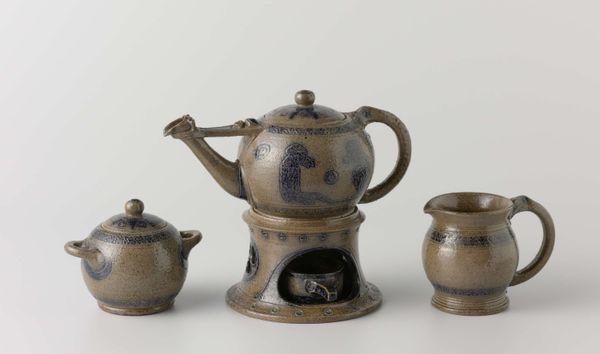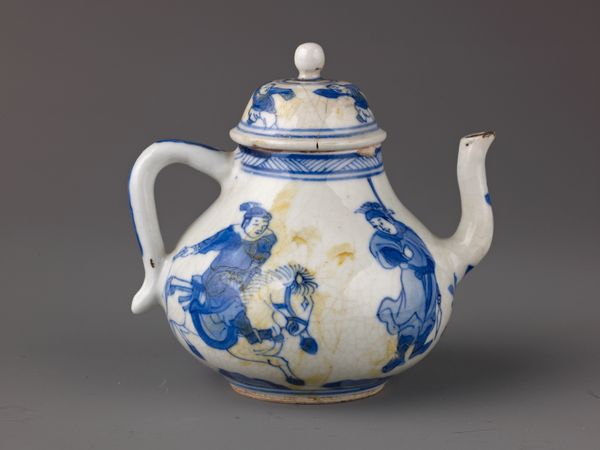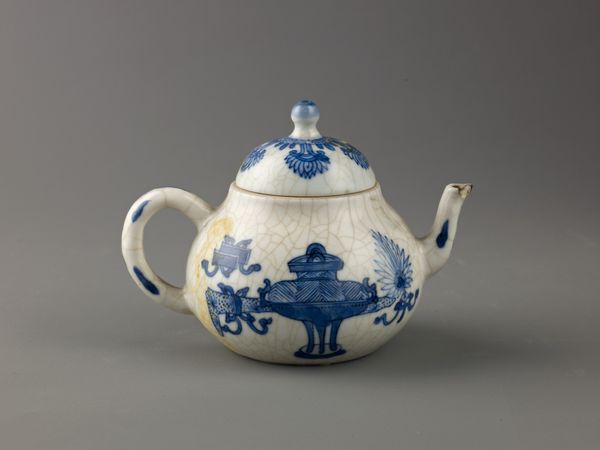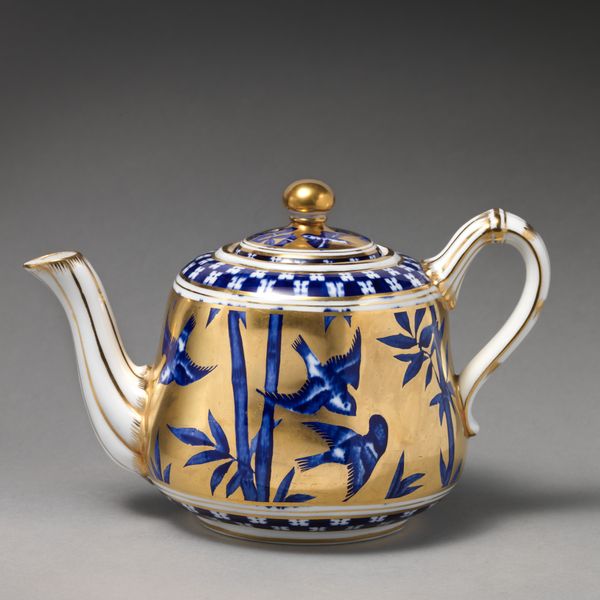
ceramic, earthenware
#
ceramic
#
earthenware
#
stoneware
#
ceramic
Dimensions: height 9 cm, width 18.9 cm
Copyright: Rijks Museum: Open Domain
Curator: This is a salt-glazed stoneware teapot created in 1901 by Joseph Mendes da Costa. You can find it here at the Rijksmuseum. Editor: My immediate impression is it feels simultaneously ancient and domestic. The coloring and texture give it a kind of rough-hewn quality, yet its obviously made to serve tea. It looks so very… sturdy. Curator: The images stamped onto the stoneware have a curious appeal. There seems to be a stylized human form, kneeling or sitting, surrounded by abstracted motifs— perhaps celestial bodies, or simply decorative flourishes. It speaks to an intimate connection with ritual. Editor: Yes, it definitely suggests ritual. I’m curious about the firing process. Salt-glazing is fascinating; the potter introduces salt into the kiln during firing, and the sodium vapors react with the silica in the clay to form a glass-like coating. You see those variations, that kind of orange peel effect on the surface? Each piece is unique to that process. Curator: And it’s these almost alchemical processes that elevate an object like this beyond simple functionality, imbue it with a sense of significance, even sacredness, that persists through time. Even a humble teapot… Editor: "Humble" maybe, but not accidental! Thinking about the production of it -- the sourcing of clay, the forming of the object on a wheel, the precisely timed addition of salt… it all reflects considerable labor and accumulated knowledge. Someone spent a great deal of time understanding and manipulating the earth to create this. Curator: Precisely, and consider the use. Tea ceremonies, even outside explicitly spiritual contexts, represent communion, social connection. These symbols elevate this common interaction of making tea to a form of shared cultural activity that becomes an heirloom object in itself. Editor: That contrast is striking – it’s an item made with intensely physical work but made for quite refined purposes. I am particularly drawn to its sturdy handle. It clearly reflects not just artistic aspiration but practical intention, use, and probably lots of handling over a very long time. Curator: Reflecting, in turn, a legacy that persists. Editor: It invites contemplation on a lineage of making, firing, glazing, and pouring, doesn’t it? It’s a very compelling little stoneware artifact.
Comments
No comments
Be the first to comment and join the conversation on the ultimate creative platform.













